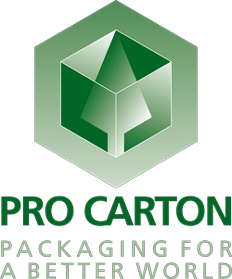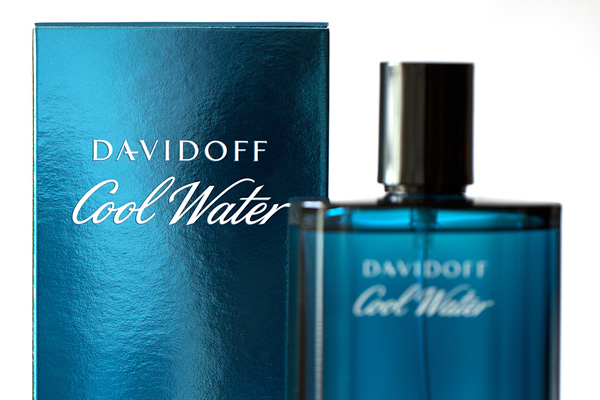More for the money
28 June 2016
Brand owners should think twice about how they spend their money. Armin Angerer, one of Europe's leading designers (Peter Schmidt Group), is of the opinion: you can achieve more with good packaging than with a TV commercial. In many cases, a marginal shift in the marketing budget could have dramatic effects.
Pro Carton: Mr Angerer, has the role of packaging changed in the last decades?
Armin Angerer: the role of packaging has not changed and individual advertising budgets have not increased. However, classical advertising and the various digital media now have to share the same - or even lower - expenditure. As a result, the importance of packaging has increased: with a budget of some €150,000 to €200,000 you can accomplish a complete packaging relaunch, whereas the same amount of money will pay for shooting a 15- to 20-second TV spot with a single airing at the most, which basically amounts to nothing. Packaging lets you achieve a far more sustainable impact with less expenditure.
But that’s not all: packaging is an important buying trigger: 70 per cent of purchasing decisions are made in front of the shelf, not on the evening before on the couch while watching a movie, but on the next day or the day after or at the weekend in the store. Later on, the packaging is in the home - in the fridge or the bathroom - and is used several times. This conveys a far more sustainable brand message as well as product experience at the same time. Packaging and product become a single entity. The efficiency, the "magic" of packaging, is its closeness to the product.
Actually, packaging should be the responsibility of Marketing, but production and handling are delegated to Purchasing. Marketing is measured by the success achieved, whereas Purchasing is measured by the costs saved. This results in a "Clash of Cultures", as Marketing attempts to drive the product, for example, by adding finishing, whereas Purchasing is measured by the potential saved. The correct process would, of course, be not to buy the cheapest but the best and not skimp on quality.
What do you mean when you speak of the "Magic of packaging"?
Without packaging it would be rather difficult to differentiate between products. And that is the real magic behind packaging: it turns a commodity into a brand. In my opinion Marlboro packaging is a perfect example of the "Platinum Class". The Marlboro logotype is only printed in transparent varnish, it provides fantastic symbolism, is absolutely clear, straightforward and unmistakeable; it is reduced to the basics. The design is inconspicuous, yet achieves maximum efficacy. That is top-notch advertising. Magic can also be achieved with opulence; it always depends on the product, but companies like Nike, Marlboro and Apple reduce this to very few elements and bring the entire brand alive. This is the magic of packaging.
With good design, and aided by technology and finishing, considerably more of the brand message could be conveyed via packaging than is presently the case. The difficulty always lies in providing proof of how sales would increase, how product appreciation would rise, if one only invested more. But there are enough examples that show that investment indeed pays off.
What is most important for you when working with your customers?
The most important part of a designer's work is the ability to listen. Design is not an art, as designers want what they do, whereas artists do what they want. Customers being open and explaining their problems is crucial for a designer’s success. This requires a certain level of humility. One needs to ask questions to get to the fundamentals of the problem together. Good design actually comes from understanding, and this makes the life of a designer so exciting because you always delve into entirely new worlds and new production technology.
What has changed in packaging and brands since you started?
Production times have become shorter and the means of production have become faster. However, this has also led to a certain superficiality, which is up for criticism, and the quest for truly revolutionary new solutions has not become any easier. Technical advances have led to tighter project cycles. This tends to leave too little time for crucial project phases which not only lend themselves to good solutions, but also often to exciting and outstanding solutions. As a result, quite often market research is carried out for three possible solutions and the printing machines are booked and ready for action.
To counteract this development, critical questions should not be raised once the project is underway, but right at the beginning when the project's objectives are defined: does the customer want a smallish relaunch or a revolution? In the latter case every good agency will be aware that the benchmark needs to be set high.
There should also be an attempt to bring all the Supply Chain competences together as early as possible, but this often proves difficult. The reason being that the Supply Chain is the domain of Purchasing and often customers give the impression that they do not really want us to talk with the suppliers. Even though it would greatly benefit projects to have all the players together from the start, customers usually leave it to the end before deciding who they will work with.
On the other hand, it allows more flexible managing of brands - in the past, packaging changes came after five years at the earliest, today they can be introduced in small steps and shorter frequencies. Editions are easier to create these days and this ranges from customised packaging down to personalised packaging. So, speed does have its advantages.
How important is sustainability for you? Is sustainability the new premium class?
Sustainability is in fact the new premium class. If we take a look at what the packaging industry and designers offer brand owners, then the volume of waste is huge and little of it is recycled. Sustainability is the focal trend in packaging and this is a good thing. And sustainability is a major strength of cartonboard, which is why cartonboard has the best future prospects. Other materials can only be recycled with far greater energy consumption; for example glass - which is also much heavier. Consequently, the CO2 footprint increases the greater the distance between, say, breweries and their customers. Cleaning glass also requires greater efforts in terms of energy balance and chemicals. So cartonboard as a material has a great future ahead.
Non-sustainable materials will most likely become more expensive, and this is where the legislators are tasked to ensure that renewable raw materials are subject to different taxation. My hope is that non-sustainable packaging will also be bought less, because, in the end, consumers wield the most power.
How is Multi-channel Packaging changing the scenario?
I believe that multi-channel will not change packaging fundamentally. The perfect example is the packaging of the iPhone or other Apple products: it celebrates the product, where one unveiling follows another unveiling and yet another unveiling. This is where the process of unpacking becomes a ritual. The shipping carton is, of course, more elaborately designed than that of Amazon. If I were the manufacturer of exclusive clothing I would probably go for two different types of packaging, one for online and one for the shelf. This would give me two opportunities of turning the experience into a repeat sale in retail outlets and the product story would not need to be repeated from the beginning again. I believe that packaging should fulfil its original function, which is celebrating the unpacking process and the product, and is often neglected.
There are also examples that show how packaging for shipping conveys a brand message. Zalando uses higher quality shipping cartons than Amazon to ensure a different perception of the brand. Such investments in the brand apparently seem to pay off.
What is the role of electronic communication elements (e.g QR, NFC) today?
They still play a far too minor role. As the option already exists for manufacturing personalised packaging via digital printing, one could start communicating with the customer, for example, via NFC. Instead of supplying everyone in the same manner, one could create personal contact via the smartphone, for example, "a Coca-Cola with your name has been delivered to a shop in your vicinity" or similar approaches; there are no limits to creativity
I believe it would be money well invested if packaging incorporated the digital channels - in separate channels, and not just social media. Packaging would then have its own digital projection surface for communicating messages. I view that as a challenge and also as a distinct advantage.
***
In two studies, Pro Carton has shown that investment in packaging pays dividends. The >> "Touchpoint Study: The Contribution of Packaging to Marketing Success" demonstrates how many effective contacts are generated by the packaging of your brands using concrete examples. In a media comparison, the study >> "Packaging: A Medium with Considerable Power" shows that cartons are more than just packaging, they are a marketing instrument in their own right and an advertising channel just like television, print or the Internet.




